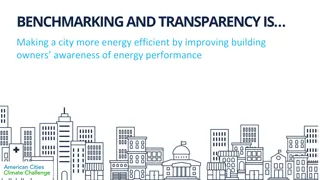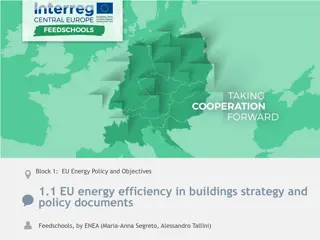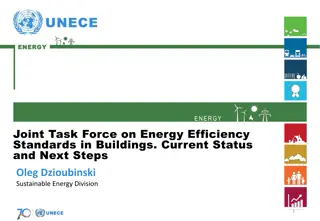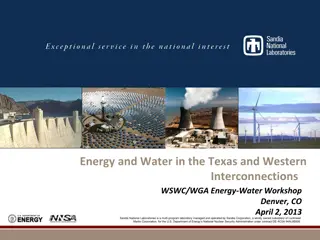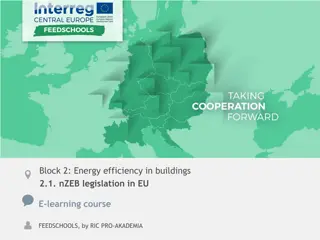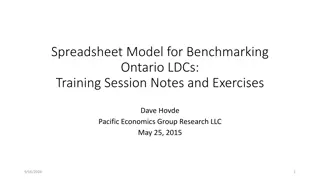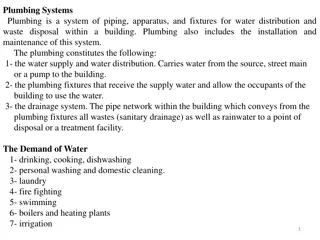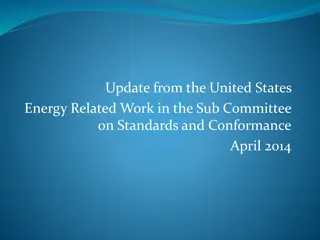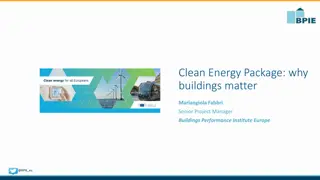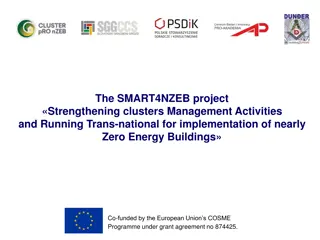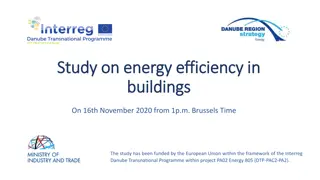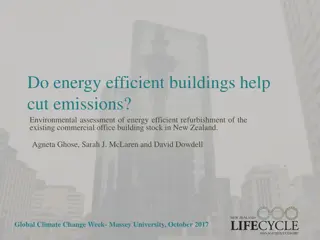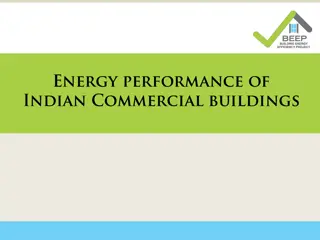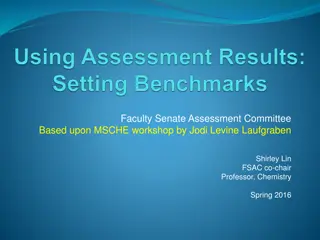Understanding Energy and Water Benchmarking for Commercial Buildings
Energy and water benchmarking is a crucial process for measuring and comparing a commercial building's energy usage to similar buildings or reference levels. By utilizing tools like Energy Star Portfolio Manager, owners can identify inefficiencies, implement best practices, and prioritize investments to improve energy performance and earn recognition through Energy Star certification.
Download Presentation

Please find below an Image/Link to download the presentation.
The content on the website is provided AS IS for your information and personal use only. It may not be sold, licensed, or shared on other websites without obtaining consent from the author. Download presentation by click this link. If you encounter any issues during the download, it is possible that the publisher has removed the file from their server.
E N D
Presentation Transcript
NJ Energy and Water Benchmarking NJ Board of Public Utilities March 7, 2022
Guiding Authority Clean Energy Act No later than five years after the date of enactment of P.L.2018, c.17 (C.48:3-87.8 et al.) [by May 23, 2023], the board shall require the owner or operator of each commercial building over 25,000 square feet in the State to benchmark energy and water use for the prior calendar year [2022] using the United States Environmental Protection Agency s Portfolio Manager tool.
What is Benchmarking? The first step to saving energy at your building is to benchmark that is, to measure and compare your building s energy to similar buildings, past consumption, or a reference performance level. Benchmarking turns the information on your utility bill into knowledge you can act on.
Benefits of Benchmarking Benchmark more than energy (such as water use, waste and materials, and greenhouse gas emissions) Identify underperforming buildings to target for efficiency improvements Identify best practices from efficient buildings Implement a comprehensive management program Set investment priorities Share and report performance Earn recognition with Energy Star Certification
What is Energy Star Portfolio Manager? Input building characteristics and monthly energy & water use
What is Energy Star Portfolio Manager? Output Report shows benchmarks against EPA s national database of buildings
How to Benchmark Receive benchmark notification from BPU with a unique building ID (UBID*) Decide to request an exemption Assign responsibility self, staff, or NJ Certified Benchmarker Enter property information into Portfolio Manager Getting Started Enter data manually, or Request data from utility Enter Utility Data Portfolio Manager has QA checks for input values and output results Data is shared with BPU Receive benchmarking report BPU has a help desk to assist with Portfolio Manager Results * UBID is a building identification standard developed by US-DOE that is based latitude, longitude, and building footprint.
You may request an exemption Demolition Demolished or soon-to-be demolished buildings Unoccupied A building is unoccupied for a full year (365 days) Foreclosure or Bankruptcy An action for foreclosure or bankruptcy has been filed during a particular reporting year Other Conditions Certain other situations for good cause may be exempted (e.g., inaccuracy in the Covered Buildings list)
Requesting aggregated building-level data from a regulated utility Owner confirms that list of customers represents the building Complete form on utility s benchmark- ing webpage Utility matches customers to the building Utility checks the consumer protection (4/50) rule Utility sends aggregated data* * Depending on the utility, the data is sent directly to your Portfolio Manager account or to you on a spreadsheet, which you then upload to Portfolio Manager
Consumer Protection aka 4/50 Rule The regulated utility will automatically aggregate the customer data for the building if, There are four or more customers, and No one customer exceeds 50% of the usage If the 4/50 rule is not satisfied, then you will have to get consent from individual tenants to release their data. Blank consent letters will be available from the utility The utility will only aggregate data from consenting tenants
Requesting aggregated building-level data from a non-regulated utility If the utility offers data aggregation, Then follow a process similar to the regulated utilities If the utility does not offer data aggregation, Download a consent letter from BPU s benchmarking website Get consent from each tenant and return the consent letter to the utility The utility will send the individual customer s data, but you will have to aggregate the data and upload it to Portfolio Manager
Public Reporting Format is TBD Public Database (e.g., Boston) Program Impact Report (e.g., Chicago) Searchable Map (e.g., Seattle)
Timeline Data Access Service available Aug 1, 2023 Notifications Sent ~July 1 2023 First Submission Oct 1, 2023
Questions? Learn more at https://njcleanenergy.com/commercial-industrial/programs/cea- benchmarking benchmarking@bpu.nj.gov




